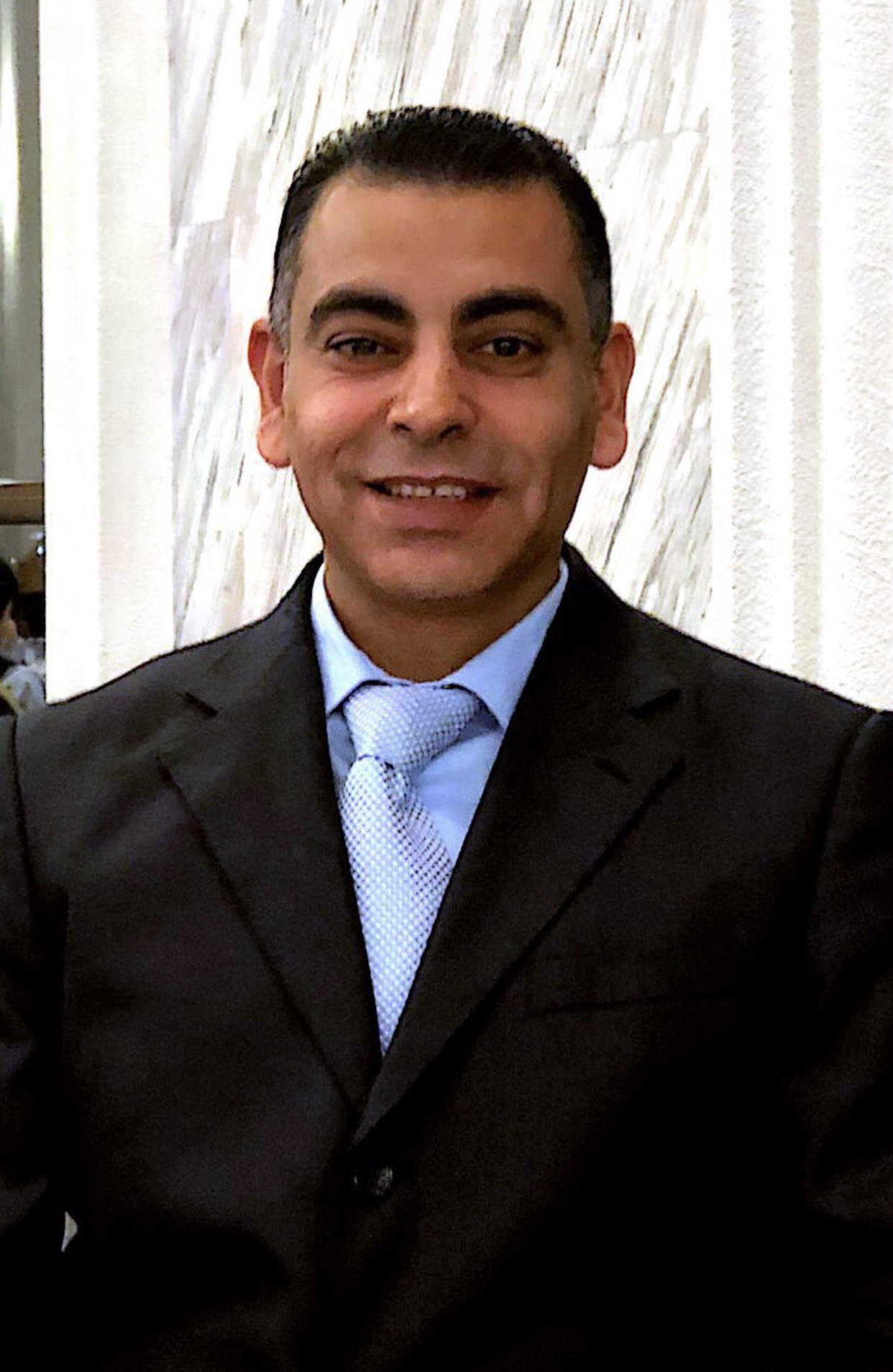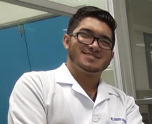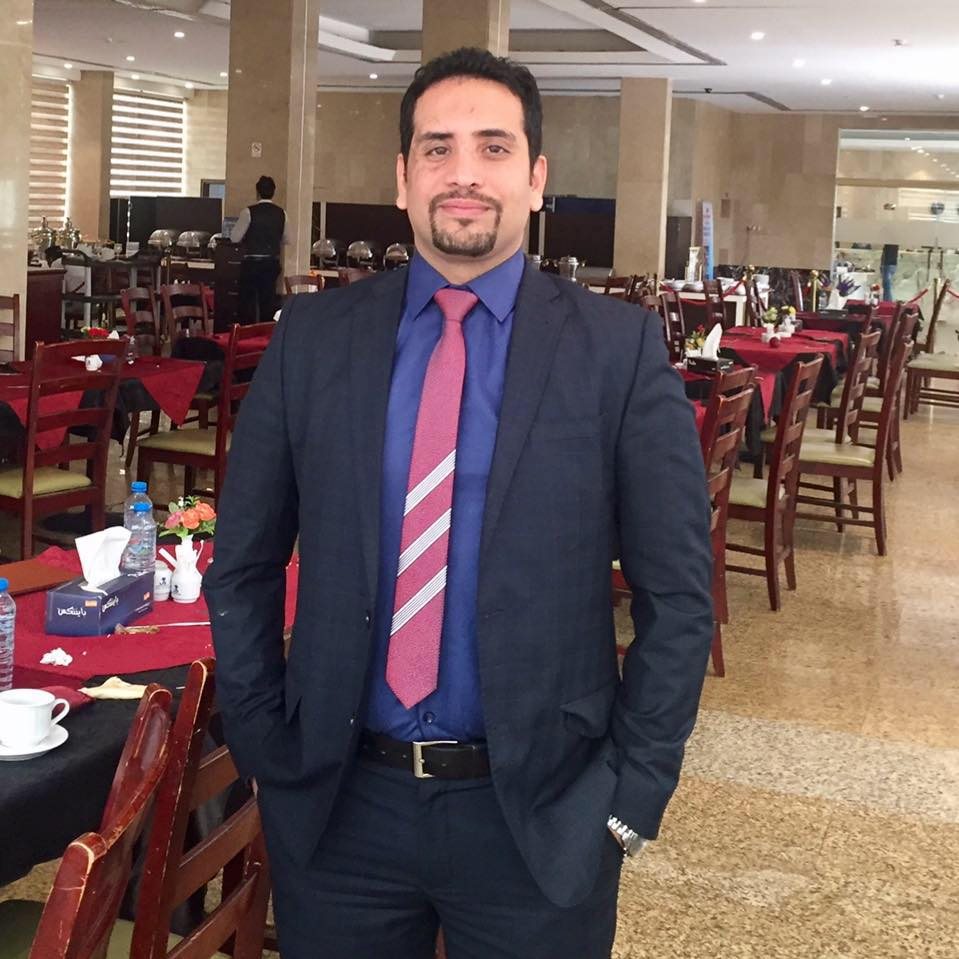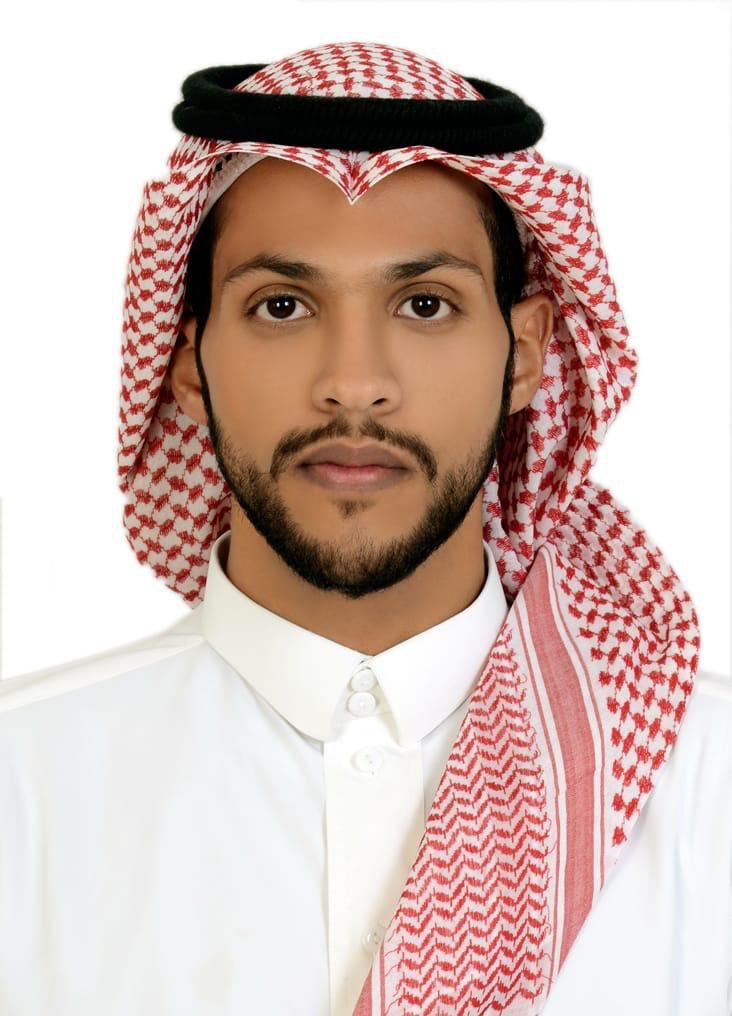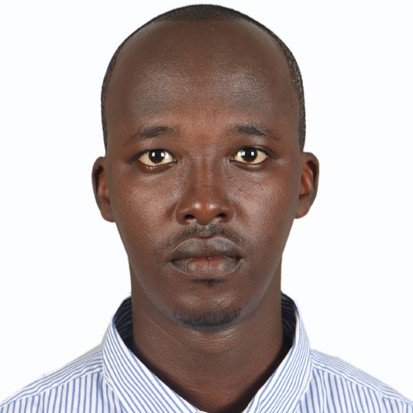Scientific Program
Keynote Session:
Title: Rhinitis medicamentosa: review of diagnostic criteria and current treatment
Biography:
Abstract:
Background: Rhinitis medicamentosa (RM) or otherwise known as rebound or chemical rhinitis is classified as non-allergic rhinitis that is characterized by nasal congestion without nasal discharge or postnasal drip. It is defined as chronic dysfunction of nasal mucosa caused by prolonged use of nasal decongestants and affects 1-9% of the population. It is more common in young and middle-aged individuals and affects equally both sexes. The prevalence of rhinitis medicamentosa in the general population is 14% and is the second most common condition after idiopathic non-allergic rhinitis (39%). Currently, there is no specific treatment for RM, however, studies have shown that decongestant abstinence, as well as the use of intranasal corticosteroids, have proven effective for this particular condition. Aims: The scope is to review the diagnostic criteria and treatment of RM. Methodology: RM has no validated criteria to diagnose it, as a similar presentation can appear with vasomotor, infective, or allergic rhinitis. Therefore assessments of symptoms for RM using the NOSE scoring system (nasal obstruction symptom evaluation) for 5 symptoms-congestion, obstruction, breathing through the nose, difficulty in sleeping, difficulty in breathing during exercise) can be used to evaluate the severity of patients’ symptoms. In addition, clinical examination is used including flexible nasal endoscopy. Results: On nasal examination, the mucosa initially looks ‘beefy red’ and at later stages of the disease the mucosa becomes pale and edematous. A Nose score of > 3 is significant. Conclusion: RM is a challenging nasal condition in terms of diagnosis as well as treatment. Therefore, further studies need to follow in order to manage RM as well as to make the public aware not to use nasal decongestants for more than 5 days.
Title: Investigation of relevant factors prognosis on RCRS post Surgery
Biography:
Abusaleh Muneif completed his MD, Ph.D. at the age of 32 years from the hospital of the first affiliated hospital of Sun Yat-Sen University, Guangzhou, China. Worked in Jerusalem for 7 years then moved to the USA, in the year 2017, started to work with many Physicians and Professors at different affiliated hospitals, Rush University Hospital ( Chicago), Thorek Memorial Hospital ( Chicago), St. Lukes Medical Centers ( Milwaukee) and now with Saint Mary and Elizabeth Hospital in Chicago City, Illinois state, USA He has many publications and contributor of a book name (The Maxillary Sinus Medical and Surgical Management)
Abstract:
CRS is the most common naso-sinuses mucosal inflammatory disease, with an incidence rate of 8-15%, can seriously affect the QOL in patients and impact the lower respiratory tract inflammatory diseases, it is the contemporary focused attention and research topic by Rhinology academy. With functional endoscopic sinus surgery and the progress of standardization of combined therapy, the cure rate is near or at 90% but still, 10% of patients are dissatisfied with treatment, thus the treatment of CRS becomes difficult, these patients were referred to refractory CRS, although the main means through standardized operation and comprehensive drug treatment, patients are still an accompanied by persistent symptoms and signs, rather than simply acute exacerbation of CRS. Refractory CRS is a complexity of risk factors and other multifactorial involvement such as allergy, super-antigen, bacterial biofilm, chronic osteitis Etc, currently focusing on international rhinology academic research content. The main issue of research is a bacterial biofilm, allergy, and inflammatory cytokines, these three main aspects exist in patients with RCRS and may explore related factors and mechanisms.
Title: MUCO/PIOCELE FOR PARANASAL SINUS
Biography:
Dr. Leonardo Colorado Aguirre is a Postgraduate doctor of the Otorhinolaryngology Service of the General Hospital of the North of Guayaquil Los Ceibos (IESS) – Teodoro Maldonado carbo Speciality Hospital (IESS) – Francisco Icaza Bustamante Pediatric Hospital (MSP), Guayaquil. The area of knowledge includes care in the Emergency area, Inter consultations, Hospitalization, and Surgery of the Otorhinolaryngology Service.
Abstract:
Introduction:
Mucocele is a chronic benign pseudocyst lesion, lined with paranasal sinus mucosa, with aseptic mucus within a mucoperiosteal lined cavity. It grows slowly and has a tendency to expand giving rise to a mass effect on the surrounding structures, which can result in erosion and bone remodeling. It results in the obstruction of a sinus ostium or a compartmentalized portion of a sinus. It is most common in adults: in the 3rd -4th decade of life, with a slight predominance in males. It occurs in all age groups.
Signs and symptoms:
The most common signs/ symptoms are greater (> 90%) ophthalmic. Frontal mucocele: protrusion of the forehead, proptosis, diplopia, mass in the superomedial orbit, headache, orbital pain, unilateral nasal obstruction (mucocele invades the nasal cavity). Ethmoid mucocele: proptosis, blurred vision± visual loss, periorbital edema. Maxillary mucocele: Nasal obstruction (medial projection), rhinorrhea. Sphenoid mucocele: visual loss, oculomotor paralysis (compression of the optic pathway), headache. If there is facial pain, consider MUCOPIOCELE.
Diagnosis:
Nasal Endoscopy, SPN TC, SPN NMR, Culture, Biopsy
Treatment:
Surgical healing is the goal and the expected result when there is a mucocele.
Conclusion:
Preoperative study of SPN CT regarding the extent of an ethmoidal-orbital-frontal mucocele is essential, in conjunction with diagnostic nasal endoscopy, for an uneventful surgery and to minimize the chances of recurrence. It must be evaluated in terms of ethmoidal pneumatization, which is highly individualistic and therefore predicts the unpredictability of its extent. Comparative imaging studies of the anatomical landmarks are vital on the contralateral (unaffected) side.
Title: Covid 19 perspective of head and neck surgeon
Biography:
Abstract:
A Head and neck surgeon imparts a key role in the multidisciplinary management of Covid 19 patients. Over the past 2 years, coronavirus has undergone many genomic mutations with varied symptoms involving the upper/ lower respiratory tract, and vascular and immune systems have been affected mainly. Amidst the first and second pandemic waves of spreading its management has become challenging. Irrespective of countries, the global communicable spread, symptomatic and preventive management remains the main strategy so far. The recent origin of the Omicron virus poses further challenges till the eradication of the pandemic. This presentation is an attempt to contribute services to the Covid 19 patients, throwing focus on the possible best care that can be given from the perspective of a head and neck surgeon.
Title: MUSCLE TENSION DYSPHONIA: EXPERIENCE FROM A CONFLICT ZONE
Biography:
Tajamul Hussain was born in Kashmir India, and he studied medicine in Quetta Pakistan. He completed higher surgical training in Otorhinolaryngology and Head and Neck Surgery from GMC Srinagar. He is currently a senior specialty registrar in the same department at GMC Nuh. He deals with general ENT pathologies but also specializes in Rhinology (endoscopic surgery of the nose and paranasal sinuses / FESS, septoplasty, functional and cosmetic septorhinoplasty, otology, allergic rhinitis, allergy testing, nasal polyps), Pediatric Otolaryngology (tonsillectomy, adenoidectomy, OSA, glue ear & grommets, allergy, pinnaplasty surgery for prominent ears. Tajamul Hussain is a lead researcher for CO2 Laser ablation and its role in ENT practice. His audit and research projects focus on the use of CO2 Laser for nasal turbinate reduction as well as MLS. He has acquired qualifications in Management and Teaching and has a great interest in Medical Education.
Abstract:
Objective:
We sought to investigate the frequency of stress among the OPD attending Kashmiri population diagnosed with muscle tension dysphonia (MTD) and measure the subjective effects of voice therapy in the management of muscle tension dysphonia.
Methods:
72 subjects that presented to ENT & HNS OPD with the change of voice were prospectively evaluated and underwent a comprehensive otolaryngological examination. Patients diagnosed as having MTD were provided a questionnaire that was divided into three parts: First part addressed the identification of the subject (age, gender, geography, profession) and included an assessment of perceived stress using the Perceived Stress Scale-10. In the second part, the patients had to evaluate their vocal quality according to parameters of the GRBAS 4-point rating scale (Grade, Roughness, Breathiness, Asthenia, Strain), each graded on a rating scale of 0-3(0-normal; 1-slight; 2-moderate; 3-severe), before and after the therapy. In the third part, the subjects also had to answer the VHI-10 (Voice Handicap Index) and the results were compared with those obtained at the assessment before the start of the therapy.
Results:
The mean age of the cohort was 30.31±07.43 (age range, 12-71) and all of them were native Kashmiris. As expected, the majority of subjects were women (43 patients). In the pooled data set, females had numerically higher PSS-10 scores than males. For females, the average stress score was M = 18.6 and for males, the average stress score was M = 16.65. In a healthy population, the average PSS stress score is reported to be 13.7 (SD=6.6) for females and 12.1 (SD=5.9) for males. At the Wilcoxon test for paired data, we observed a significant difference between the VHI pretreatment (mean=19.75) and the VHI post-treatment, that is at the time of this study (mean=9.73; P =0.017). The grade (G) was measured in terms of improvement of the vocal quality compared with before therapy and the patients show a high degree of satisfaction (mean=0.65). When it comes to roughness (R) and breathiness (B), the patients note that their voice is rarely rough (mean =0.62) and even less breathy (median =0.44). Patients also noted improvement in other parameters of the GRBAS scale.
Conclusions:
Stress is pervasive, persistent, and nearly unavoidable in modern life. The decades-old perplexing and mind baffling pandemonium hovering around the Kashmiri population has had a tremendous impression on the psychological development of people in this region. A cautious conclusion is that stress may play a significant role in the upkeep of MTD. MTD needs to be approached in a multidisciplinary setting where close cooperation between a laryngologist, a speech-language pathologist, and a psychologist is possible.
Title: Association between human papilloma virus and laryngeal masses
Biography:
Abstract:
Background:
The Human Papilloma Virus can play a role in the development of head and neck tumors such as oropharyngeal tumors. Nevertheless, a real impact between Human Papilloma Virus and other head and neck sites such as the larynx is not well studied.
Objectives:
The aim of the study is to assess the association between the Human Papilloma Virus (HPV) and laryngeal tumors in a sample of our patients.
Patients and Methods:
A prospective, case-control study, in which random samples of 34 patients who have laryngeal masses. In the period between November 2017 to December 2018. In Department of Otolaryngology, Basra Teaching Hospital. These patients are evaluated by the questionnaire according to gender, age, marital status, full medical history, and examination. A biopsy then is taken for histopathology study to confirm the presence of tumors or other lesions. Malignant tumors are evaluated according to staging and grading systems. All lesions were submitted for the presence of HPV by an Immunohistochemistry (IHC) study. The results evaluated for an association between HPV and type of lesions and other variables. Statistical studies were done using SPSS v.23.
Results:
The study reveals that there was HPV infection in 30% of patients' samples. Moreover, HPV was found in 30% of laryngeal squamous cell carcinoma and in 30% of benign lesions. Statical tests show there was no significant association between HPV and Laryngeal squamous cell carcinoma.
Conclusion:
Although there were thirty percent of patients had HPV infections, there was no significant association between HPV and laryngeal malignant tumors. A larger epidemiologic and more multicentric, case-control studies with larger samples are mandatory for evaluating the true prevalence of HPV infection in the mucosa of larynx and laryngeal malignancies.
Title: MORPHOMETRIC ANALYSIS OF IDEAL LATERAL NASAL OSTEOTOMY IN HUMAN DREIED EGYPTIAN SKULLS
Biography:
Abstract:
Background:
Osteotomy is one of the most crucial and difficult steps in rhinoplasty.
The aim of the present study is to determine the morphological and topographical anatomic variations of an ideal lateral nasal osteotomy (IOs) in relation to chosen anthropometric landmarks reference points; anterior lacrimal crest (ALC), Lacrimal Tubercle (LC), inferior orbital rim (IOR), inferior orbital nerve (ION) and maxillolacrimal suture (MLS) and thickness of ascending process of the maxilla (APMx) to minimize complications.
Materials and Methods:
37 dried adult Egyptian skulls (both sides analyzed 74 sides) in the Frankfurt plane were included; 19 females and 18 males. Measuring is done using a digital Vernier caliper, compass, wire, and needle. The data were analyzed statistically for mean, SD, median, modal, range, used SSPS, and P error (standard error).
Results:
Distance (all in mm) from IOs to ALC, LT, IOR & ION: were: 3.19-4.17, 6.12-8.08, 10.80-11.50, 14.90-18.20 Respectively. Distance from IOs to MLS at level of ALA, LT, IOR & ION 4.21- 6.20, 7.12-9.21, 10.14-12.15,10.21-12.37 were respectively. Thickness of APMx at level of ALA, LT, IOR & ION (a) at orbital rim:3.35-3.12 ,6.95-7.43, 8.84-9.49 and (b) at IOs 1.31-161, 1.44-1.91, 2.12-2.57,2.24-2.87 were respectively.
Conclusions:
This analytic study gives detailed information which will facilitate professionals to ascertain lateral osteotomy and in turn assists in noninvasive technique to minimize the incidence of complications.
Title: Spasmodic dysphonia
Biography:
Abstract:
Spasmodic dysphonia is a rare idiopathic organic dysphonia. The presentation will highlight briefly this disorder (anatomy, physiology, pathophysiology, diagnosis, and treatment). The presentation is directed to general ENT specialists, family doctors, GPs, and SLP aiming to raise awareness of these diseases and make it easy for doctors to diagnose this disease and have a general idea about treatment options.
Title: Quality of Sleep in Allergic Children and their Parents in Aseer region of Saudi Arabia
Biography:
Abdulbari Alzahrani, ORL-HNS Consultant Associate Professor of Otolaryngology in King Khalid University, Saudi Arabia. He has many publications that are published in multiple medical journals worldwide.
Abstract:
Background & Objectives:
Sleep quality is significant for physical and emotional well-being and influences the patient's view of prosperity during the day. Rest aggravations in patients with Allergic illnesses (Allergic Rhinitis, Bronchial Asthma, and Atopic Dermatitis) can intensify the condition, entangle them and debilitate their personal satisfaction. With regards to kids, their folks are additionally impacted. We inspected the presence of sleep issues in guardians of youngsters with allergic diseases looking for any Sleep problems, and their effects on the life quality if there are any.
Methods:
Parents of children suffering from an allergic disease were recruited in the out-patient clinic of the KKU clinic, study duration was from May-2021 to November-2021 In order to be eligible, participants had to be parents of a child suffering from allergic rhinitis, asthma, or atopic dermatitis. Parents with chronic diseases themselves were excluded from the study, although pre-existing sleep disorders cannot be ruled out.
Results:
PSQI mean score in the group of parents was 6.6 (SD: 2.6, range: 0---13, median: 6). 82 (58.99 %) of them had a PSQI ≥ 5 and this means that most parents had a subjective sleep quality perceived as bad, while only 57 (41 %) had a good sleep quality perception (PSQI < 5).
Conclusion:
These discoveries propose that changing sleep patterns in kids with Allergic diseases can influence guardians too. Such an impact influenced by the severity of the disease itself, further adds to the weight of respiratory hypersensitivities besides the skin hypersensitivity and should be considered in ongoing investigations.
Title: Mucoepidermoid carcinoma. A case report
Biography:
Abstract:
Introduction:
Mucoepidermoid carcinoma accounts for 1-4% of all parotid tumours. It is the most common malignant tumour of the parotid gland, with specific symptomatology and slow progression. Three histological types are defined: low, intermediate, and high. Management combines excisional surgery with radiotherapy depending on the histological grade
Case presentation:
An 8-year-old female child from one of the regions of Burundi consults for a left jugal mass extending to the neck in its upper laterocervical part. This mass has been evolving for 3 years. The history of the disease dates back to 3 years ago when the parents noticed a small left preauricular jugal mass. The progressive increase of the mass motivated medical consultation. Examination revealed a significant, regular, circumscribed left jugal mass extending to the neck, discretely mobile in relation to the deep plane. There is no facial paralysis or cervical adenopathy. The skin opposite is healthy. A CT scan of the facial mass revealed a large circumscribed left parotid mass with no deep infiltration. A conservative total parotidectomy was decided upon and allowed for the non-complete removal of the mass, the endofacial part of which infiltrated the masseter muscle. The postoperative course was simple. The histology received three weeks after the operation favoured an intermediate grade mucoepidermoid carcinoma according to the AFIP (Armed Forces Pathology) classification.


